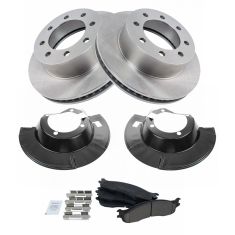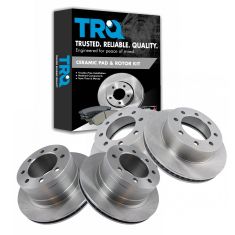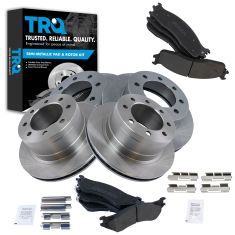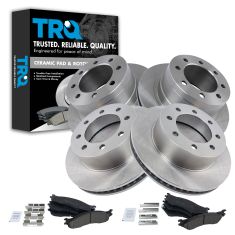1ABFS01333-Dodge Ram 1500 2500 3500 Front Ceramic Brake Pad & Rotor Kit TRQ BKA11132
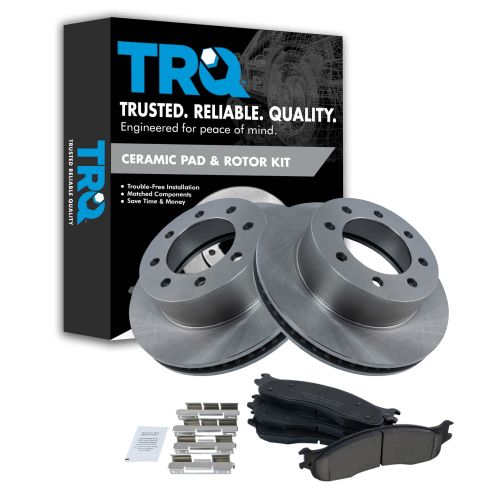
Replaces
2003 Dodge Ram 2500 Truck Front Ceramic Brake Pad & Rotor Kit TRQ BKA11132

Product Reviews
Loading reviews
5.00/ 5.0
9
9 reviews
So easy!
August 20, 2018
So easy to order the parts. Came very quickly to the house. Very pleased with this transaction. Oh and another plus...if its been awhile since you changed your pads and rotors, well A1 Auto has the whole process on YouTube. Telling my friends about this 1. Thanks A1 Auto!!
First purchase
December 29, 2018
Made my first purchase from A-1 auto. I was very pleased. Shipping was super fast, prices were great.Exact parts I needed for my truck. The website was very friendly. After seeing how well it went for me, my friend also ordered brakes and rotors. He as well had super fast shipping and was very happy
Great parts at a great price
June 19, 2019
Quality is fantastic and so is the expedited service to get them.
Very competitive pricing, great availability of parts, quick shipping.
May 18, 2020
My always go to for auto parts.
Brake kit for 2005 Dodge Ram
June 27, 2020
Got this brake kit with OEM fitting rotors and ceramic brakes for an awesome price. 1aauto had super fast shipping. Got the parts on the truck and they fit perfect and had really good quality feel to them. I have a couple hundred miles on them with no squealing or any other issues. I love 1a auto and will continue to use them from here forward. I have already recommended them to a few of my friends as well.
Everything advertised
June 20, 2022
Good quality so far. Shipping was on time.
November 6, 2023
Perfect fit and fast shipping.
November 18, 2023
Working great on my truck...
May 23, 2024
Great fit, great product and service. Thank you
Customer Q&A
Does this fit on a 2005 dodge 2500 with the 5.9 cummins?
June 8, 2017
10
Yes, these will fit.
June 8, 2017
Alex P
Do these fit 6.7 Cummings 4x4?
November 13, 2022
10
Please enter your vehicle's year make and model in the search bar at the top of the page. This will display parts guaranteed to fit your vehicle. Just be sure to verify all of the information shown in the Vehicle Fit tab before ordering.
November 14, 2022
Cristina P
Dodge is a registered trademark of FCA US LLC. 1A Auto is not affiliated with or sponsored by Dodge or FCA US LLC.
See all trademarks.









